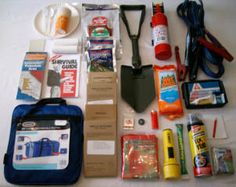You’re Bug-Out Vehicle Preparing and Packing!
You’re Bug-Out Vehicle Preparing and Packing
 Most preppers know that even if a full-fledged bug out from their home location is not called for today, there will be plenty of times in the near future when they could be stranded in their car or will be in an emergency situation while driving or within reach of their bug-out vehicle.
Most preppers know that even if a full-fledged bug out from their home location is not called for today, there will be plenty of times in the near future when they could be stranded in their car or will be in an emergency situation while driving or within reach of their bug-out vehicle.
An emergency could be as simple as being stuck in a traffic jam or snow storm for several hours. In this article we’re not only going to talk about which BOV to get, but also the types of gear you need to equip it with.
Choose Your Bug-Out Vehicle
The first order of business is to choose your bug out vehicle. Now of course it would be ideal if you could afford to buy the perfect bug out vehicle, but for most people, this just isn’t practical.
So if you’re a prepper who is a little more on the average side when it comes to discretionary income, you’ll have to make do with a vehicle that you already own. And unless you own or can purchase more than one vehicle, it will have to double as your everyday ride around town. This means you can’t make your vehicle look like a military tank. So what can you do?
The Basics for Mobility in a Bug-Out Vehicle
Repairs and Condition
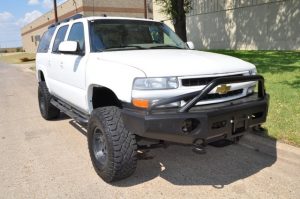 Ultimately, the most important reason for you to have a bug out vehicle is for mobility. Your bug out vehicle needs to be reliable enough to get you and your family away from your home and to your bug out location safely or to get you completely out of dodge if your bug out location is also compromised. It needs to be ready at all times. If you are concerned about the effects of a potential EMP, vehicles manufactured before 1980 are better.
Ultimately, the most important reason for you to have a bug out vehicle is for mobility. Your bug out vehicle needs to be reliable enough to get you and your family away from your home and to your bug out location safely or to get you completely out of dodge if your bug out location is also compromised. It needs to be ready at all times. If you are concerned about the effects of a potential EMP, vehicles manufactured before 1980 are better.
Keep the vehicle in good working condition at all times and repair any items that show wear and tear as soon as possible. Make sure that the operator’s manual for your car is in your glove box in case you need to refer to it if something goes wrong. It’s also a good idea to familiarize yourself with how your car works and how to make basic repairs to your vehicle. You will want to pay special attention to the electronic system, the fuel system, the power system, and tires.
Tools and Spare Parts for the Bug-Out Vehicle
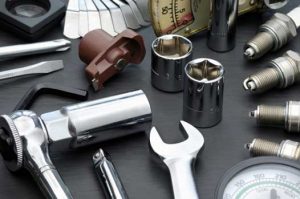 Make a list of the things that could wrong with your vehicle and start collecting not only the tools you will need to make those repairs but also the spare parts you will need to replace items that wear out or break. Common items to have stored in your bug-out vehicle include spare fuses, extra bulbs, and any electronic parts, as well as rubber hoses, spark plugs, starter, tires, brakes and pads, wiper blades, belts, electrical tape, and a circuit tester, etc. If you have the space, a portable air compressor comes in handy as long as you still have power.
Make a list of the things that could wrong with your vehicle and start collecting not only the tools you will need to make those repairs but also the spare parts you will need to replace items that wear out or break. Common items to have stored in your bug-out vehicle include spare fuses, extra bulbs, and any electronic parts, as well as rubber hoses, spark plugs, starter, tires, brakes and pads, wiper blades, belts, electrical tape, and a circuit tester, etc. If you have the space, a portable air compressor comes in handy as long as you still have power.
Emergency Equipment
Keep items in your car that can help you to get assistance during an ordinary roadside emergency as well. These items are especially handy in “normal” times, before a post-SHTF scenario. Following a natural disaster or in a post-SHTF scenario you may get stuck in mud or snow, or roads blocked with debris or fallen trees.
Common items to store in your car for minor emergencies include: road flares, tire iron and jack, a foldable shovel, fix a flat (to temporarily inflate a flat tire), jumper cables, a tow chain and winch, traction chains, your snow brush and ice scraper, a fire extinguisher, an axe or hatchet, and something to use as a signal flag (preferably white or glow in the dark).
Replacement Fluids
Under typical operating conditions you can go for many miles without having to refill fluids, however in a bug out situation, you may be operating your bug-out vehicle at the higher limits of its capacity. You also will not be able to just stop in at the local service station to refill fluids. Make sure you stock extra fuel, as well as extra engine oil, washer fluid, transmission fluid, and engine coolant.
The Basics for Survival
I know you probably know a lot of these things but, the question is, do you have the gear in your car’s trunk? It would help if you made a list and tick off each item as you add it.
Shelter/Warmth
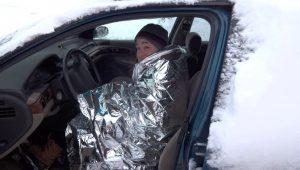 Stock your bug out vehicle so it can provide shelter and warmth while you are on the move or in the event that you cannot reach your bug out location. You will need to carry supplies for warmth such as space blankets or fire resistant blankets, extra clothing, boots or spare footwear, and several ways to start a fire and do basic cooking. If you need to leave your car, you will want to have the basics to put up a shelter nearby so include at least a tarp, paracord, and stakes or tent kit with a sleeping bag for each person.
Stock your bug out vehicle so it can provide shelter and warmth while you are on the move or in the event that you cannot reach your bug out location. You will need to carry supplies for warmth such as space blankets or fire resistant blankets, extra clothing, boots or spare footwear, and several ways to start a fire and do basic cooking. If you need to leave your car, you will want to have the basics to put up a shelter nearby so include at least a tarp, paracord, and stakes or tent kit with a sleeping bag for each person.
Food and Water
Include a kit with emergency food and water as well as any reference material you gather about edible and medicinal plants. Your car can get pretty hot especially in warm weather so make sure that any food you store is rotated out frequently so that it doesn’t spoil. A LifeStraw filter, water purification tablets, a case of bottled water, and at least one container that can be used to carry water. Gear to purify water will also be good to have on hand.
Security
Make sure that you have several items in your car to help you defend what you have from those who are desperate, hungry, and willing to take your supplies by force. Security items can include both lethal and non-lethal weapons. Items to consider include handguns and spare ammunition (if legal in your state), and your choice of several different knives including a foldable knife, a fixed blade, and a machete or hatchet style knife. There are many things a good knife can be used for.
You may also want to store non-lethal weapons include things such as pepper spray or mace, bug or wasp spray, as well as weapons for hunting small animals such as a slingshot, bow, and/or snares and fishing gear. Consider what you will need to defend yourself against any prey, whether human or animal.
First aid and Personal Hygiene Items
 Your car should always have a comprehensive first aid kit. This should include items that will come in handy not only for minor emergencies but also for trauma injuries that could result from a car accident, gunshot or knife wound. Include items a thermometer to gauge fever level, a comprehensive first aid guide to help you diagnose shock and other health issues as well as the items to treat injury and illnesses.
Your car should always have a comprehensive first aid kit. This should include items that will come in handy not only for minor emergencies but also for trauma injuries that could result from a car accident, gunshot or knife wound. Include items a thermometer to gauge fever level, a comprehensive first aid guide to help you diagnose shock and other health issues as well as the items to treat injury and illnesses.
Personal hygiene during a post-SHTF event may be a luxury rather than a necessity but having some basic items in your bug out vehicle will certainly help to boost morale and may be just the refresher you need to keep you going for that those last hundred miles to your destination. Consider the basic items such as toothbrush, toothpaste, and dental floss, toilet paper, trash bags (for waste disposal), hand sanitizer, baby wipes, sunglasses, sunscreen, bug repellant, and other personal hygiene items.
Navigation and Communication
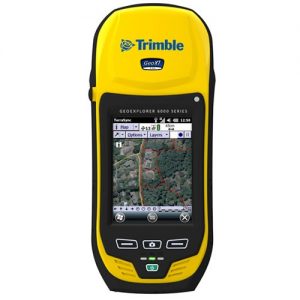 Ideally you will be able to use your vehicle to get from point A to B and in normal times your GPS system will be working. But in a post-SHTF scenario or if your vehicle breaks down, you will need to have the resources with you to navigate on your own and to communicate with other family members or rescuers.
Ideally you will be able to use your vehicle to get from point A to B and in normal times your GPS system will be working. But in a post-SHTF scenario or if your vehicle breaks down, you will need to have the resources with you to navigate on your own and to communicate with other family members or rescuers.
Always keep updated copies of maps of the local area as well as battery, hand crank flashlight, or solar powered or LED flashlights and a head lamp so you can see where you are going. Include a good quality compass in your car bug out kit just in case your EDC compass is taken by looters or damaged in some way.
In a post-SHTF scenario, you will want to scope out the area in front of you before you move into it. A pair of strong binoculars will come in handy for seeing long distances. You may also need to signal to rescuers or communicate with other family members. Make sure you have a back-up cell phone with a fully charged battery as well as both a CB radio or walkie talkies and a good hand crank or battery operated radio so you can keep up with weather and situation updates.
If you are new to prepping, this list can certainly seem overwhelming. Our recommendation is that you start by gathering the items that you already have on hand, possibly in the garage or another location of your home before you buy any supplies. Then, work on obtaining those supplies that will help keep you alive in an emergency and make sure your vehicle is ready to carry you at least 50-100 miles. Once you have all of that in place, then work on obtaining the additional supplies needed to repair or replace items that break on your car so that you could keep it running for days or weeks if need be.
What’s in your vehicle BOB? Let us know if we forgot something leave a comment.
Bug Out Vehicle Equipment Mobility packing preparing You’re Bug-Out Vehicle Preparing and Packing
